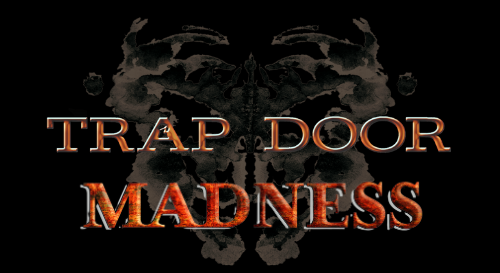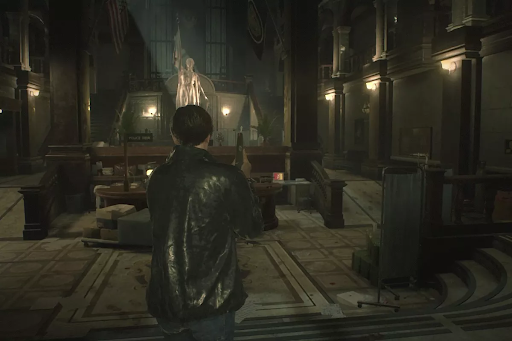History of Escape Rooms, Part Two
By: Kristina Malmstrom
It may seem that escape rooms suddenly exploded across the country. However, few people are aware of where these rooms actually came from. So, in this two part series we’ll take a look at the history of escape rooms.
How We Will Do It
Consequently, this history will involve other media and experiences that inspired escape rooms. In addition, we will also look at the evolution of escape rooms once they started popping up.
The Start Of Escape Rooms
Now, it surprises many to learn that there was no ‘original’ escape room that started the trend, but rather a series of similar experiences that eventually began to fall under that name.
What They're Known For
They’re known for being a successful blend of gaming and live entertainment. So, without further ado, here are the actual inspirations that led to the escape room experience we know and love today:
Point and Click Flash Games
Instead of having to logically solve puzzles to escape, these games focused on the player trying to find and use hidden objects and codes in the room in order to escape. Consequently, point and click flash games influence the history of escape rooms we see today.
How They are Similar
Subsequently, players still have to find hidden objects and piece together codes from what they find in the room.
How They are Different
However, the major difference is that in escape rooms, players get to physically interact with their environment. Regardless, these games still had a huge influence on the development of physical escape rooms, as they were the first time we saw these type of ideas in action.
The Timeline of Point and Click Games
The first time we actually saw a media with the name ‘escape room’ came from point-and-click flash games. As a result, these simple games were popular in the early 2000s, before video games had the stunning graphics we see today.
How Point and Click Games Work
In these, players were virtually trapped in an environment, such as a room or a car, and had to find a way to escape. Then, players would use their cursor to interact with elements around them, such as clicking on a vent to discover a key underneath (hence, point and click).
In Short. . .
In short, these games had similar mental challenges that you see in escape rooms today, but were restricted to a virtual setting (and usually not the same level of creative themes that we see today).
Video Games
Though they aren’t a direct influence on the History of Escape Rooms, video games are still important.
Puzzle Games
Puzzle games are typically cited as an excellent source of inspiration, as they challenge you to think strategically and logically within a fun experience.
Adventure Games
Now, an argument can also be made for adventure games, or any game where you have to think creatively to solve problems. Regardless, from games like Tetris, where players are literally solving a logical puzzle, to games like The Legend of Zelda, a wide variety of games challenge players to think creatively in order to advance.
Resident Evil Games
In addition, one of the more obvious video game inspirations of escape rooms would be the first two Resident Evil games. That is to say, players travel from room to room (or through an entire city), solving puzzles, searching for ammo and supplies, and attempting to actually escape the mansion or city without being devoured by zombies.
Incorporating Problem Solving
Many video games have been incorporating creative problem solving aspects to offer additional challenges for players beyond battles and quests. As a result, blending puzzles and adventures has cultivated the experiences you’ll find within escape rooms (see Trap Door’s own games such as Bogeyman and Witch Hunt).
In Conclusion. . .
Whether it’s solving logical puzzles or exploring an area and using the objects you find within it, video games a continue to influence society and the entertainment that people seek. Because of this, themes of escape rooms can often be similar to trends in themes of video games, such as the currently popular zombie apocalypse games.
Table Top Role Playing Games
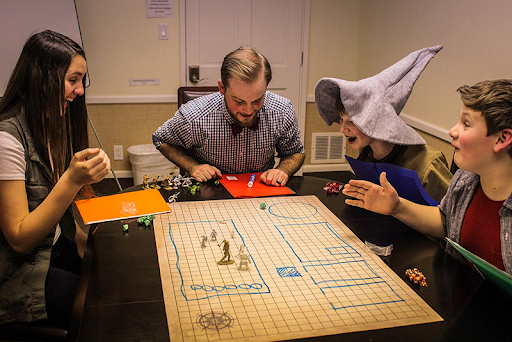
Another influence on the History of Escape Rooms are tabletop role-playing games. In short, these are games where one plays as a character to complete a set objective. However, these games differ from Live Action though.
What are Tabletop Games
In other words, tabletop games are restricted to a tabletop. So, players use a game board and/or speaking to one another to communicate what they want to do. Technically, most board games would fall under this category.
Examples
Pandemic
Pandemic has players rushing to cure a plague that has spread across the world. In short, the role-playing part is that each player has a specific job within the party, such as Scientist or Medic. Additionally, each job has special bonuses that come along with it.
Dungeons and Dragons
Of course, one of the more popular examples of tabletop role-playing games is Dungeons and Dragons. Essentially, in this game players design their own characters to play. Then, a set of players portraying characters play a campaign that is created by the ‘Dungeon Master.’ Now, the Dungeon master is the individual selected to run the game.
Tabletop Games Compared to Point and Click
This game has been popular for many years, drawing on players creativity and problem-solving skills. Similar to point and click games, Dungeons and Dragons requires players to verbally interact with their environment, picking up items to use later, battling creatures, and solving problems however they can.
In Conclusion. . .
While escape rooms don’t typically require players to portray a specific character, the ability to solve problems with resources available is a consistent challenge, as we see in tabletop role-playing games.
Add Your Heading Text Here
Live Action Role Playing
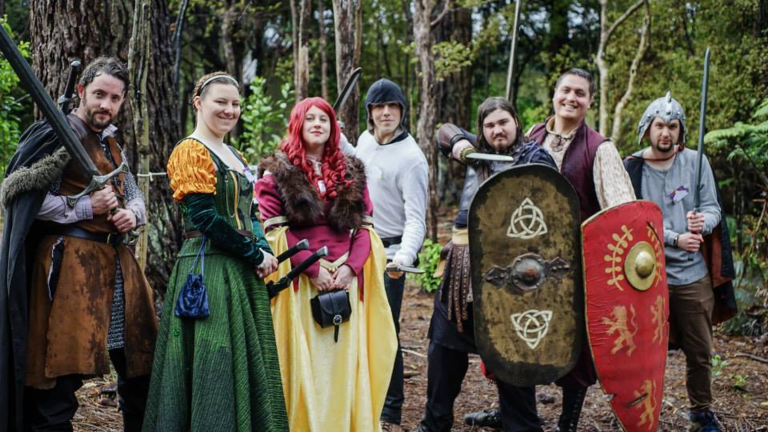
Live Action Role-Playing (LARP) games are extremely similar to tabletop role-playing games, except your ‘table’ is much larger. Players still design and act out their own original characters, but instead of being restricted to only verbal representation they also get to experiment with physical.
How to LARP
Players get to dress up as their character while interacting with the physical world. Additionally, these games typically take place in a large location, such as a park. Then, a selected committee writes an overarching goal for the players to accomplish. However, the players are still free to engage with other players, NPCs (non-player characters- any person who is playing the game per instruction by the committee rather than as a free player), and the items around them.
LARP Compared to Tabletop Games
LARPing is extremely hands-on, and takes a lot more commitment to pull off compared to its tabletop cousin. As a result, it can also cover a wide range of themes as well. Themes include historical re-enactments, and medieval, steampunk, and even dystopian.
The Characters
In terms of physically playing characters, it’s clear the impact this has had on the design of escape rooms. In short, many escape rooms have similar components, such as live action role-playing, that aren’t found in tabletop games.
LARP-ing's Effect on the History of Escape Rooms
On the less immersive side, think of escape rooms where you are completing a mission and have to act as a specific role, such as investigator or prisoner. However, on the more immersive end of the scale, consider rooms set in the past that are lit by candlelight and where cell phones are prohibited or rooms where you are required to wear a specific costume.
Interactive Theater
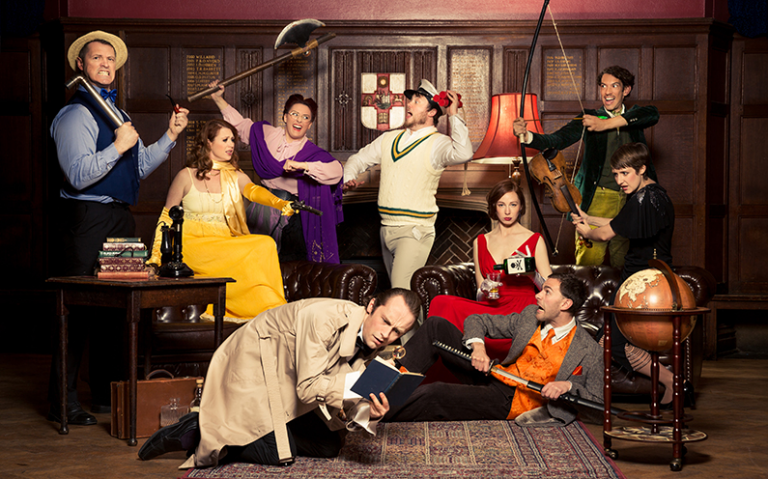
Interactive theatre is, traditionally, theater where the actors break the fourth wall. In other words, to some extent, the audience is involved in the entertainment they’re receiving.
The Evolution of Interactive Theater
Over time, this has evolved from passive participation, where actors address the other actors (rather than the audience), to an active role where the audience members are directly influencing their own experience. An example of this would be a hypnotist practicing on audience members.
How it Works
But what does this mean? One of the more popular forms of interactive theatre is the murder mystery dinner party. The audience members find themselves interacting with actors in character, when suddenly someone is murdered. As a result, it is up to the audience to solve the mystery by engaging with the characters and finding clues and evidence.
Haunted House Interactive Theater
Another popular (but spooky) form of interactive theater is haunted houses, and this influence on the history of escape rooms can easily be seen in Trap Door’s creations. Haunted houses tend to rely on the scary atmosphere that players travel through as well as costumed actors to deliver a frightening experience as guests explore a house or attempt to find their way through a maze.
Interactive Theater's Effect on the History of Escape Rooms
Of course, it’s understandable how this theater evolved to escape rooms. Simply, remove the actors, and the audience becomes players scrambling to find clues to help them escape. Consequently, this is especially true of haunted house interactive theaters. The same sort of chilling environments that elicit goosebumps can be found at all three of Trap Door’s locations.
TV and Movies
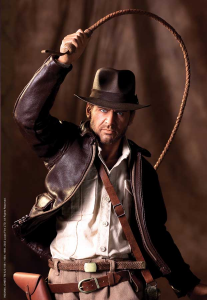
Of course, the history of escape rooms was also influenced by the most popular medias: television and movies.
TV
Reality tv shows cover a lot of ground today, but escape rooms can really be traced back to some of the more popular competitive shows. Now, in these shows contestants compete against each other in a variety of activities.
Examples
Game shows like Survivor and The Amazing Race feature players solving various challenges and puzzles in order to win. Additionally, consider also the (sadly) discontinued competition show, King of the Nerds. In this, players compete in a series of mental and physical challenges that test wits as well as creative thinking.
The Impact on Escape Rooms
Overall, most tv shows where contestants compete in challenges to prove their brains, strength, or some combination of the two help cultivate this smart creative thinking ability. In this way, we can see this connection to escape rooms, where players are competing together against the clock.
Movies
Adventure movies, like Indiana Jones, are also credited as an influence of escape rooms, as viewers watched someone else attempt challenges and solve puzzles in order to achieve his goal or escape life threatening situations.
Examples
When discussing movies, the Saw series has also had a noticeable influence on escape rooms. For example, these films also saw (unwilling) people trapped in a situation trying to solve their way out in order to survive. Of course, this influence is more so seen in the horror-themed escape rooms, which typically depict similar situations.
The Impact on Escape Rooms
Trap Door’s own original escape room, “Escape the Architect,” featured a similar scenario to Jigsaw’s creations. And, now, we’ve even seen this trend go full circle, with the “Escape Room” movie that premiered this year ( though we do promise our escape rooms aren’t quite like that).
Scavenger Hunts
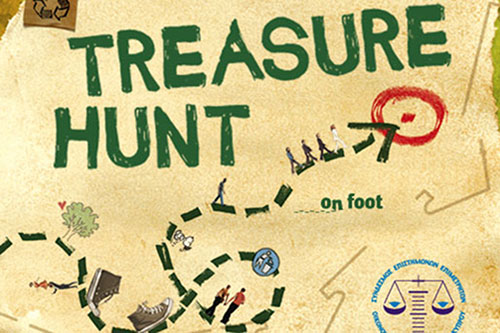
A game that involves running around to find a specific object? We can understand how that relates to the history of escape rooms. Scavenger hunts typically involve players trying to find specific objects and being judged on the amount of objects they find within a given time period.
How it Works
The boundaries for this can range from a backyard to an entire town! While scavenger hunts typically don’t involve solving puzzles and riddles (though they certainly can!), an important aspect of escape rooms is the ability to find all of the objects you may need within that room.
Treasure Hunts Compared to Escape Rooms
Treasure hunts, on the other hand, tend to involve solving clues or riddles to decode a map in order to find the buried treasure. Players must be able to think both creatively and intelligently if they wish to succeed. Similarly, escape rooms usually have some level of decoding in order to determine the codes or passwords.
Interactive Entertainment
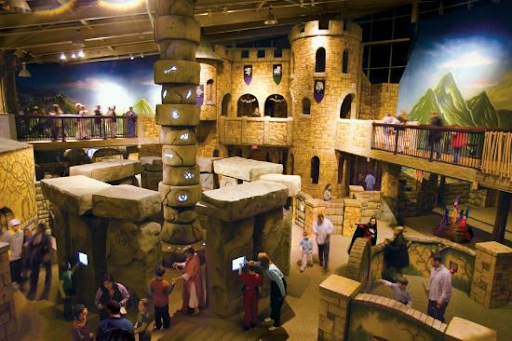
Interactive entertainment can be a variety of activities, but here we’re focusing on experiences that are set up by the company. However, the actual entertainment comes from players interacting with the set they find themselves in.
How They Work
These experiences usually tie to a theme, which can also be used to draw customers in. As a result, this sort of entertainment is very similar to interactive theatre, except that instead of interacting with actors, players are engaging with objects and such within the set.
Examples
A popular version of this experience is MagiQuest. This game is typically spread across multiple rooms, with an immersive fantasy-themed set and a variety of characters that appear as animatronics or on video screens.
Players can also use their wand to interact with various items, such as opening a treasure chest or causing crystals to glow. Consequently, the key is that while the environment itself is definitely attractive, the real fun comes from players interacting with the pieces around them however they wish.
Themed Dining
Of course, the idea of interactive entertainment isn’t just limited to actual experiences. Another popular version of interactive entertainment is themed dining. These restaurants typically dedicate themselves to a specific theme, and create interactive decor and props that guests can interact with while they enjoy their meal.
Jekyll and Hyde's Club
This dining experience features a stage, where Jekyll and Hyde will occasionally perform a skit. Additionally, the restaurant also features spooky decor that is meant to spook guests. As a result, it’s a perfect dining experience for horror buffs.
Interactive Entertainment Compared to Escape Rooms
Interactive Entertainment affected the history of escape rooms because escape rooms have an immersive set that helps the players become fully-immersed in their environment. Furthermore, interactive entertainment helped to set the trend of consumers seeking to spend money on experiences rather than goods.
In Conclusion. . .
By creating environments where players are encouraged to interact with their surroundings, interactive entertainments helped pave the way for escape rooms, where players typically have more of an objective or goal to accomplish.
In the second part of our history of escape rooms, we’ll take a closer look at the beginning of escape rooms, and how they have evolved throughout the United States and the world!
Related Content
Mentioned Games
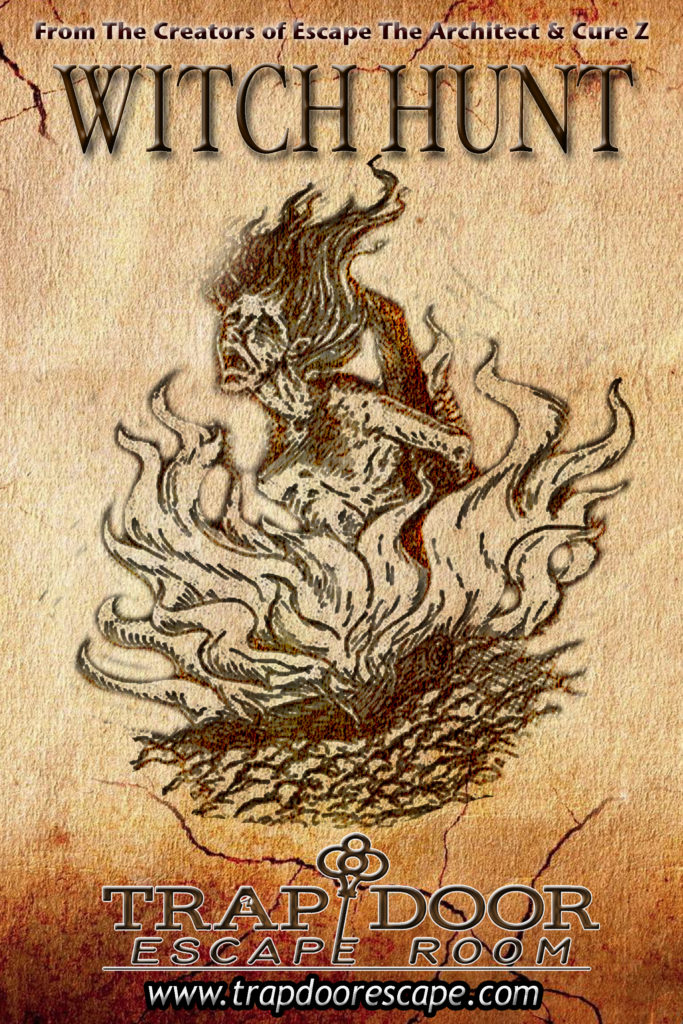
Days before the celebration, a fire took all the family photos needed to complete the Ofrenda. Luckily, each member of the family was buried with a portrait.
$39.99 Per Player
You have 60 minutes to escape, at $39.99 per person plus tax. At a minimum of 1,000 square feet of playing space, this theme is sure to provide a thrilling adventure. Witch Hunt is three times larger than the average escape room experience. Most importantly, however, all bookings are private.
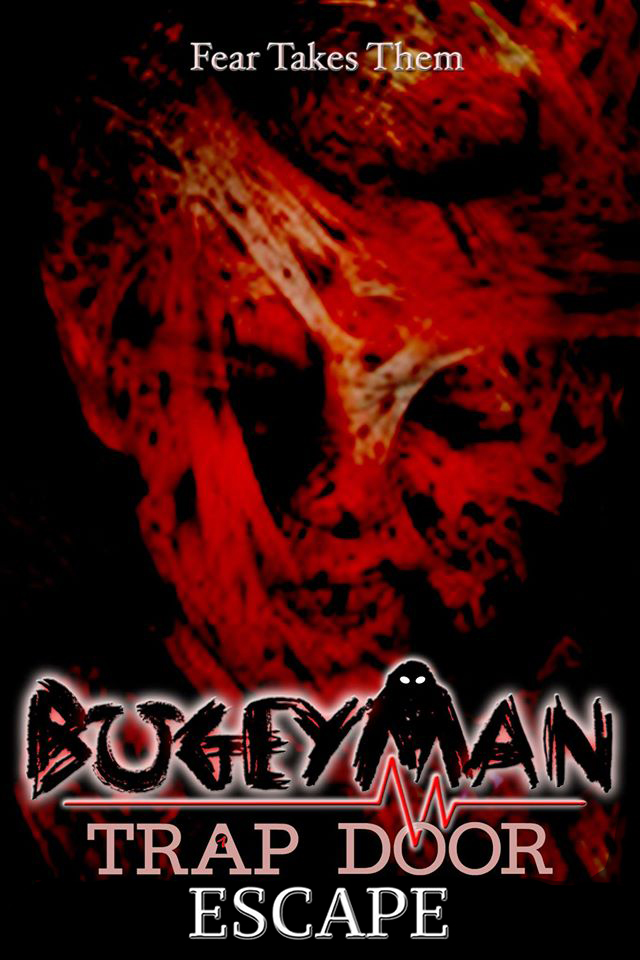
You are a Paranormal Investigator trying to recover missing children taken by the Bogeyman.
$45 Per Player
There are 60 minutes to escape the theme at $45 per person plus tax. At a minimum of 1,000 square feet of playing space, this theme is sure to provide a thrilling adventure. This Poconos Escape Room is three times larger than the average escape room experience. All bookings are private.
Trap Door Escape Company
Trap Door Escape Room has 3 locations: 3180 Route 611 in Bartonsville, PA in the Poconos; 60 White St. in Red Bank, NJ; and 34A Speedwell Ave. in Morristown, NJ. The Red Bank location was the first of the 3 locations, opening in the fall of 2015. Morristown followed in the summer of 2017, and Bartonsville opened during the holiday season of 2018.
History
The idea came to Tone Purzycki back in 2011 after he wrote a screenplay that developed into a live-streaming game. It revolved around an actor trapped in a situation and the audience had to solve puzzles to figure out where he was trapped. “Find Me Event” had more than 1,000 people playing over the course of several hours. After the success of several other streaming events, the idea of an escape room was born.
Locations
Each location has different rooms from which to choose. Our Morristown location is home to Day of the Dead, Witch Hunt, and The Greatest Freakshow. In Bartonsville, you’ll find Cure Z, F5 Tornado Escape, Fear the Bogeyman, Mad Hatter’s Tea Party, We’re All Mad Here, and Prisoner Z. In Red Bank we currently have Everest – our first 2 story escape room. Ripper of London is another game that will soon be available at this location.
Trap Door Escape Room also offers team building, streaming events, and birthday parties. For more information on any of our games, prices, and locations, explore our website or call 570-234-3366
